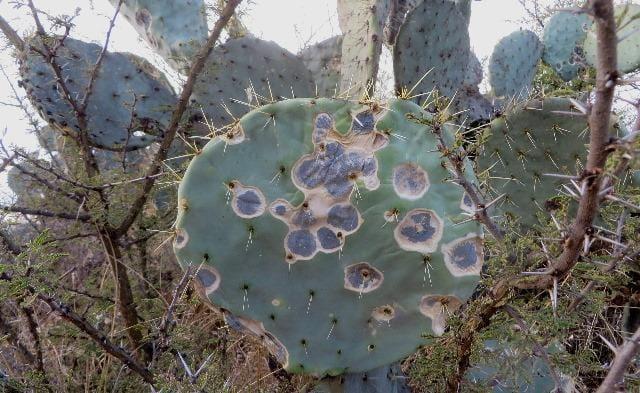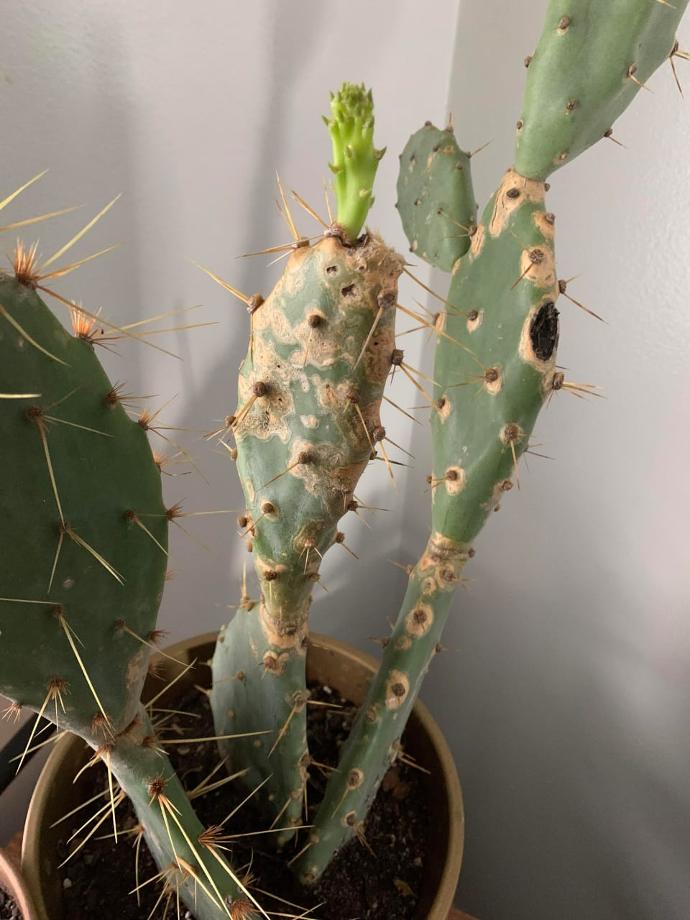Nopal Cactus Plant
Nopal cactus is a frost-sensitive perennial that grows well in well-drained sandy soil. It prefers full sun and tolerates dry to moist conditions.
Habit
Perennial
Height
1-2 m
Growth
Fast
Soil
Well-drained, sandy
Shade
Full Sun
Moisture
Dry to moist
Edible
Yes
Medicinal
Yes
Origin
Mexico, Americas
Climatic Condition
Desert, Tropical
Temperature (°)
20-30°C
Humidity (%)
40-60%
Potting media
Cactus mix
Fertilizers
Balanced NPK (10-10-10)
Watering
Moderate, deep watering
Plant Weight
300-500 g
Flowering Time
Summer, Fall
Soil Ph level
6.0 - 7.0
Water Ph level
6.5 - 7.5
Soil EC
1-2 dS/m
Yield Per Plant
Edible pads and fruit
NPK ratio
5:10:10
life Span
Perennial
Health Benefits
High in fiber, antioxidants, and vitamins
Suggested Grow Media or Potting Mix ?
50% sand, 30% perlite, 20% compost
Suggested Fertigation/Fertilizers
Fertilize every 4 weeks with a diluted cactus fertilizer.
Common Diseases and Remedies
Fusarium rot, charcoal rot, stem rot
Flowers die and become covered with grey fungal growth , plants may be yellow spotted or wilted, planets turn grey green ,wilt and die.
spray the infected part of the plant with neem oil.
HEALTH BENEFITS
- Rich in fiber, aiding digestion and regulating blood sugar.
- High in antioxidants, reducing inflammation.
- Supports heart health by lowering cholesterol levels.
- Contains vitamins A, C, and calcium for immune and bone health.
What Is An Nopal Cactus?
The nopal cactus, also known as the prickly pear cactus, is native to Mexico and other arid regions of the Americas. It is commonly cultivated for its edible petals (nopales) and fruit (prickly pear). Nopales, often used in Mexican cuisine, are highly valued for their flavor and nutritional value, and prickly pear is enjoyed as a sweet and juicy fruit. Additionally, nopal cactus is known for its health benefits, including its potential to lower blood sugar levels and reduce inflammation. The nopal cactus, also known as the prickly pear or prickly pear, is a type of cactus native to the United States. It is characterized by flat oval pads (nopales) with spiny spines. Commonly used in Mexican cuisine, nopales are known for their edible pads and sweet fruit called tuna. It is also rich in antioxidants, vitamins, and minerals, and is highly valued for its potential health benefits.
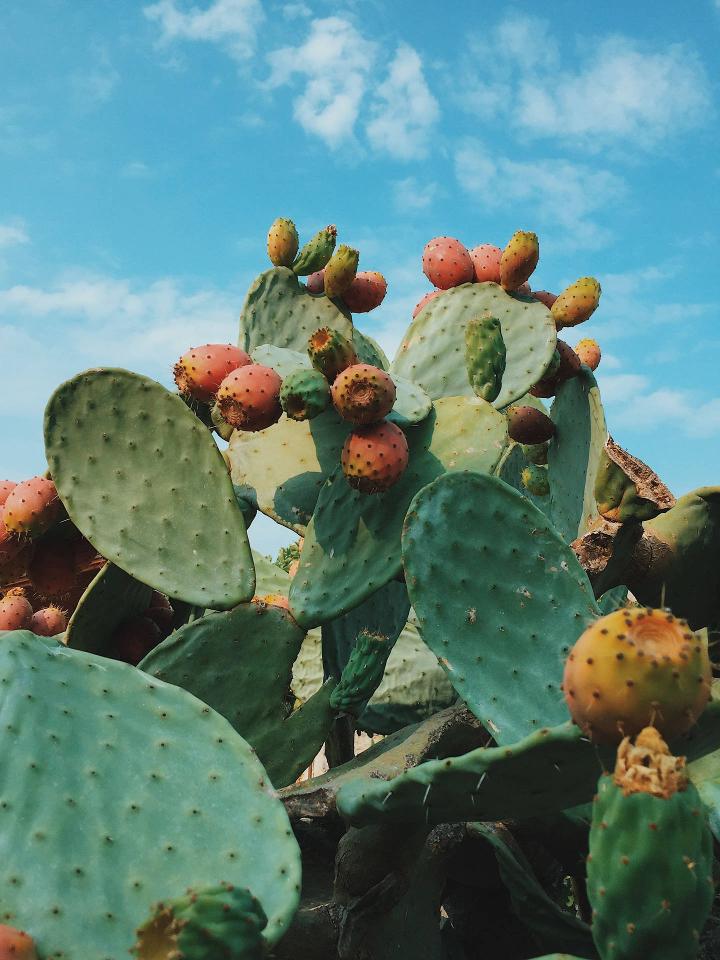
What Are The Different Types Of Nopal Cacti?
1. Opuntia ficus-indica
Indian fig Also known as Opuntia or Barbary fig, it is the most commonly cultivated species for its edible petals (nopales) and fruit (prickly pear).
2. Opuntia cochenillifera
This species is cultivated primarily for its cochineal insect, which lives on cacti and produces a red dye used in food and cosmetics.
3. Opuntia streptacantha
Known as the purple pear cactus or nopal tunero, this variety is prized for its medicinal properties and is often used in traditional Mexican medicine.
4. Opuntia robsta
Also known as wheel cactus or silver dollar cactus, this species is often grown as an ornamental plant for its large, round pads and attractive flowers.
5. Opuntia microdasys
Commonly known as rabbit ear cactus, this species is popular as a houseplant because of its small, flat pads covered with fine hairs reminiscent of rabbit ears
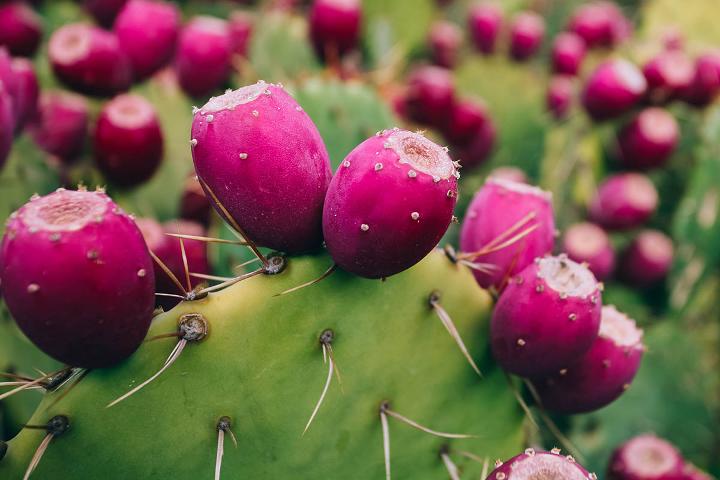
How To Care For Nopal Cactus?
1. Location
The nopal cactus, also known as the prickly pear, is native to Mexico and the southwestern United States. It grows in arid and semi-arid regions with well-drained soil and plenty of sunlight. It can also be grown in other warm, dry climates around the world, including parts of South America, the Mediterranean, and Australia.
2. Sunshine
Nopal cacti usually prefer full sunlight, so it's best to place them in a location that receives at least 6 to 8 hours of direct sunlight per day. If growing indoors, place it near a south-facing window where it receives plenty of sunlight. Outdoors, choose a location with plenty of sunlight and good drainage to ensure optimal growth.
3. Soil
The soil requirements for the Nopal Cactus, also known as the Prickly Pear Cactus, are sandy or rocky soils that are well-drained and have a slightly acidic to neutral pH. To prevent root rot, it is important not to retain too much water in the soil. A mixture of sand, perlite, and potting soil is effective. In addition, incorporating organic matter such as compost will also contribute to the supply of nutrients.
4. Hydration
Nopal Cactus, like most plants, requires regular watering to stay hydrated. Water deeply and thoroughly, allowing the soil to dry slightly between waterings. Water more frequently during the growing season (usually spring and summer), but less during the dormant season (usually fall and winter). Always monitor soil moisture to avoid excess moisture, as excess moisture can cause root rot.
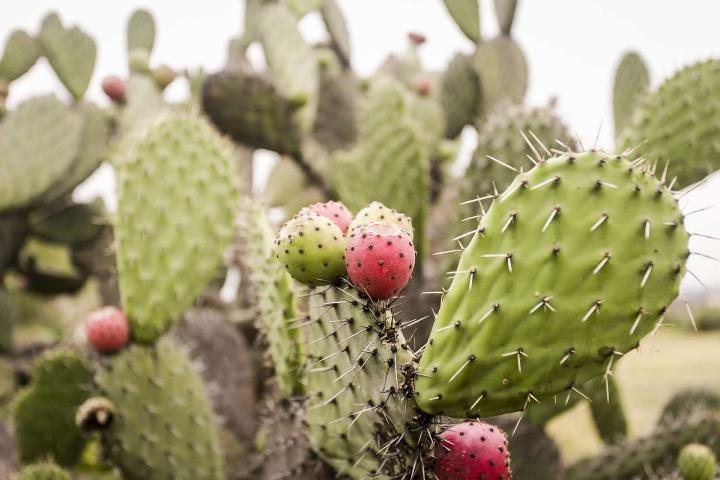
5. Nourishment
The nopal cactus, also known as the prickly pear, grows in well-drained soil that is rich in organic matter. You can feed it with compost or old manure to provide essential nutrients. Additionally, a balanced, low-nitrogen fertilizer can help support plant growth without promoting excessive vegetative growth at the expense of fruit production. To prevent root rot, water sparingly, especially during hot, dry weather.
6. Issues
Overwatering. Overwatering your prickly pear cactus is an easy mistake, as cacti require much less water than most people expect. Overwatering can lead to root rot and scab, which causes rust-colored, cork-like spots to appear on the stems. Cacti must be completely dry between watering.
What Are The Benefits Of Nopal Cactus
Nutrient rich Nopales are rich in vitamins, minerals and antioxidants such as vitamin C, vitamin A, calcium and magnesium. Digestive Health Rich fiber content supports digestion and promotes healthy gut microbiome. Blood Sugar Control Nopal helps regulate blood sugar levels and is beneficial for diabetics and people who want to control their blood sugar levels. Weight Control The fiber in nopales can help you feel fuller for longer, which may aid in weight loss and weight control efforts. Heart Health Some studies suggest that nopal may help lower cholesterol and improve heart health. Anti-inflammatory properties Nopal contains compounds with anti-inflammatory properties that help reduce inflammation in the body and reduce associated symptoms. Skin Health Topical application or ingestion of nopal extract may have positive effects on skin health due to its antioxidant content and potential ability to promote collagen production.
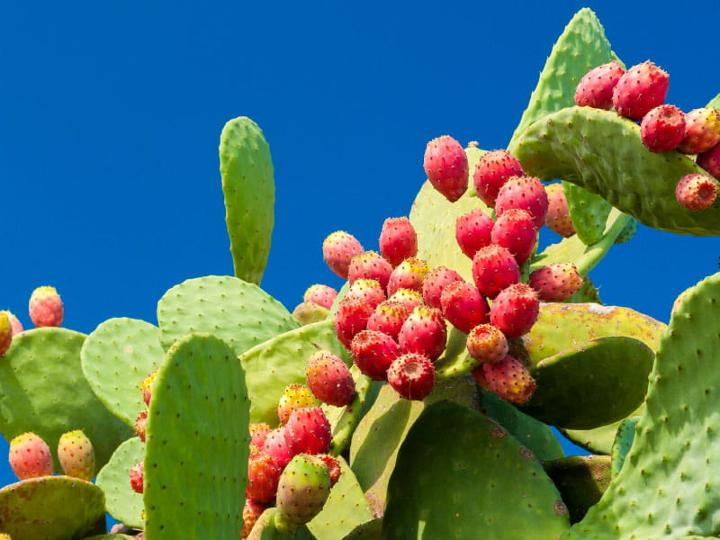
FAQs About Growing Nopal Cactus
1. How to maintain nopales plant ?
Maintaining a nopal plant, also known as a prickly pear cactus, involves several key steps Watering Nopales require infrequent but deep watering. Allow the soil to dry out between waterings to prevent root rot. During hot, dry periods, water more frequently. Sunlight Place the plant in a location with full sunlight. Nopales thrive in bright, direct sunlight. Soil Plant nopales in well-draining soil, such as sandy or rocky soil. Avoid soil that retains too much moisture, as it can lead to root rot. Temperature Nopales are typically hardy in USDA zones 9 through 11. Protect them from freezing temperatures, as they are susceptible to frost damage. Fertilizing Apply a balanced fertilizer formulated for cacti and succulents once a month during the growing season (spring and summer). Follow the instructions on the fertilizer package. Pruning Remove any damaged or dead pads to promote healthy growth. Use gloves to protect your hands from the spines. Pests and Diseases Keep an eye out for common pests like scale insects and mealybugs. Treat infestations promptly with insecticidal soap or neem oil. Additionally, watch for signs of fungal diseases such as root rot and treat as needed.
2. What are the uses of nopales plant ?
The nopales plant, also known as prickly pear cactus, has various uses Food The pads (nopales) and fruits (prickly pears) are edible. Nopales are commonly used in Mexican cuisine, often in salads, tacos, or as a side dish. Prickly pears can be eaten fresh or used to make juices, jams, and candies. Medicine Nopales are believed to have medicinal properties, including potential benefits for controlling blood sugar levels and reducing cholesterol. They are also used in traditional medicine for treating wounds, inflammation, and gastrointestinal issues. Cosmetics Extracts from nopales are used in cosmetic products for their moisturizing and skin-soothing properties. Animal Feed Nopales can be used as fodder for livestock because of their nutritional content
3. Can I grow nopales plant in indoor?
Yes, you can grow nopales plants indoors, but you'll need to provide them with the right conditions. Nopales prefer bright, indirect sunlight and well-draining soil. Make sure to water them sparingly, allowing the soil to dry out between waterings. With proper care, they can thrive indoors.
4. Which pot is best for growing nopales?
For growing nopales, also known as prickly pear cactus, you'll want a pot that provides good drainage and allows for sufficient root space. Terra cotta pots are often recommended because they allow air to circulate through the soil and help prevent overwatering. Additionally, they provide stability for the cactus as it grows. Look for a pot that is at least 12-16 inches in diameter and has drainage holes at the bottom. Make sure to use a well-draining cactus mix for the soil.
5. From where can I shop for nopales?
You can shop for Nopales plants at local nurseries, garden centers, or botanical gardens. Additionally, you can also find them at online plant stores and marketplaces like Etsy, Amazon, or specialized plant websites. Make sure to check availability and shipping options based on your location.
